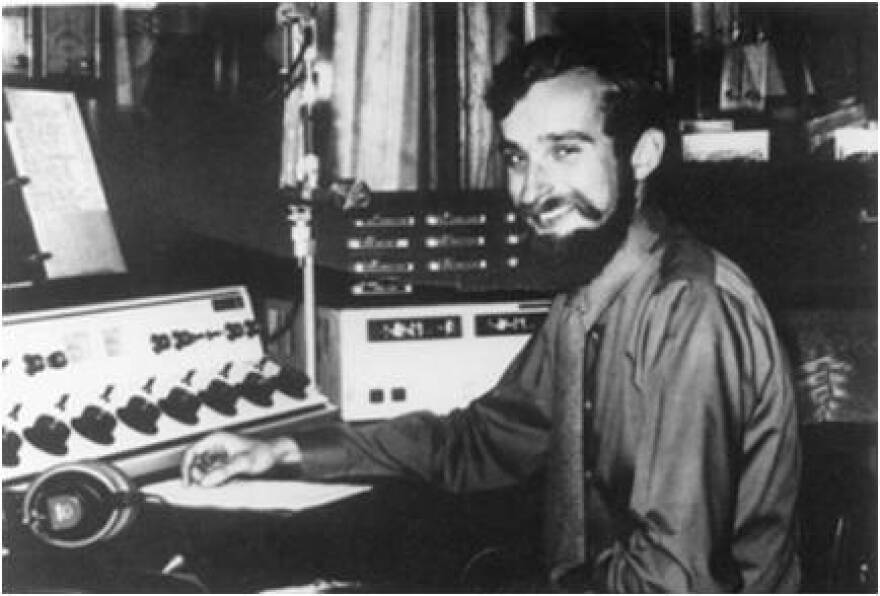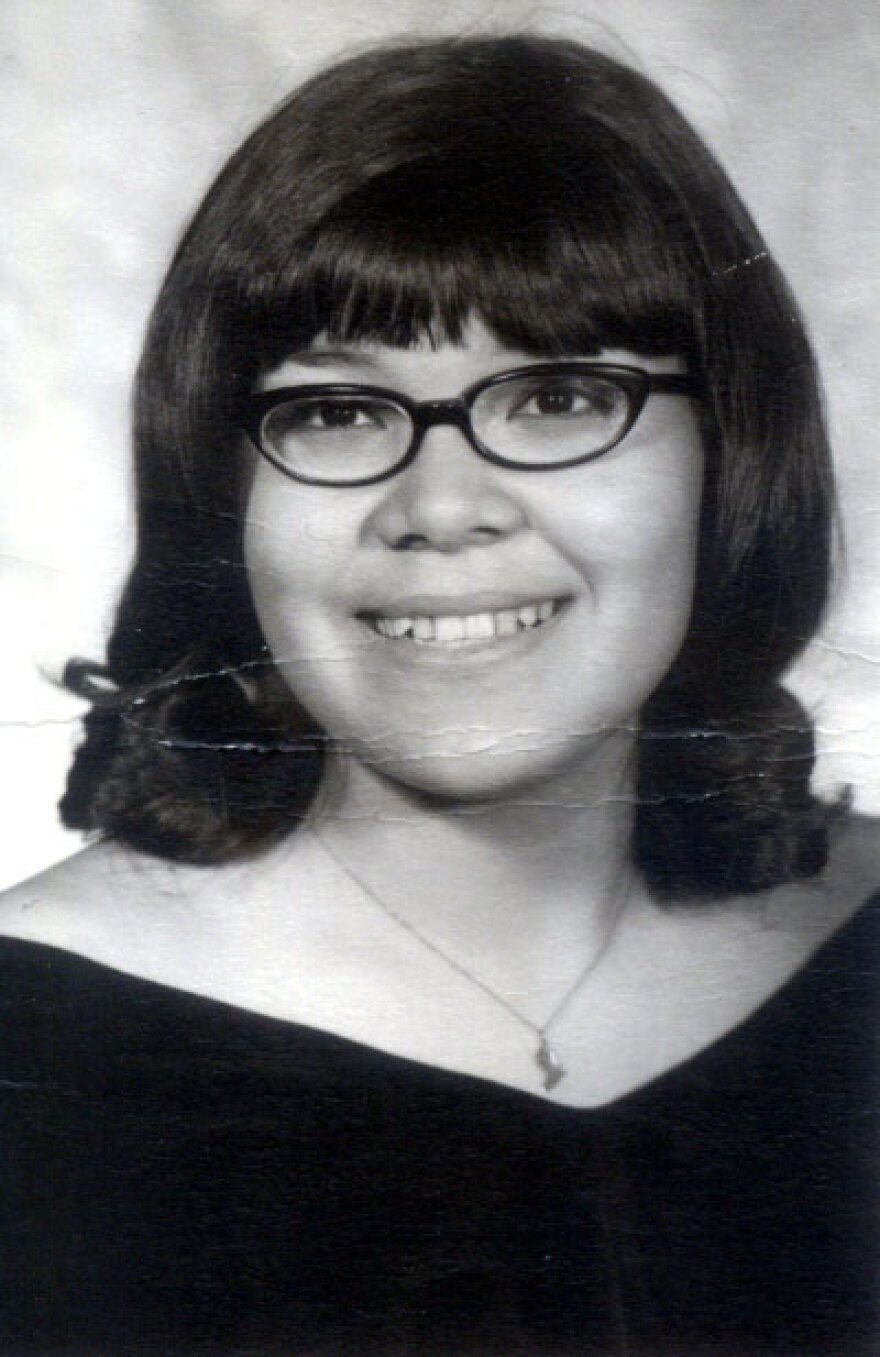Editor’s note: Rhonda McBride was a former colleague of Nellie Moore’s and a longtime friend. Currently McBride works for KNBA.
Nellie Moore was one of the first Indigenous reporters in Alaska, who could sew an atikluk, an Iñupiaq overshirt, as well as stitch news and information into stories that made a difference.
From radio to the Internet, the fabric of Moore’s life spanned a huge revolution in technology. She died last week at the age of 69 from complications due to a long illness.
Moore leaves behind a huge body of work that blends the best of Iñupiaq culture and modern Western journalism.

You can thank her parents for that. Her mother, Ada Ward, instilled the Iñupiaq values of hard work and caring for community, someone who always kept a sack of pancake mix on hand to feed stranded travelers at a moment’s notice.
And there was her father, Ed Ward, who came to Kotzebue as an FAA flight service specialist. In a 2016 interview on a statewide public radio show, Talk of Alaska, Nellie described her dad as a man who was “crazy” about radio and kept a big stash of electronic parts in their home.
“I would always find the tubes that somebody needed,” she said, “And put them in the tube tester to make sure they worked.”
As a teenager, Moore earned her First Class Radio Operator’s license and learned to use the Morse code to communicate over the radio.
You might say, radio was in the blood. Today, Nellie’s sister, Lenora manages KOTZ, the public radio station in Kotzebue. But in the 1970s it was a gleam in her Dad’s eye, a passion project, one that would soon become Nellie’s.
Just as the station was about to become a reality, Alex Hills met Moore at the Kotzebue Airport.
Her father had taken her there to meet Hills, who would soon become the station’s first manager.

Hills has written extensively about the pioneering days of radio and telecommunications in Alaska and wrote about Moore and her father in a book called Finding Alaska’s Villages and Connecting them.

When KOTZ went on the air in 1973, Moore was barely out of high school, but Hills hired her to be the first news director.
“I thought she was a rare find in many ways,” Hills said, “Effervescent Nellie Moore.”
“Nellie, later as most people in Rural Alaska know, became Alaska’s leading Native journalist,” he said. “But then she was just a young 19-year-old. Kind of spunky, actually.”

Moore eventually took over as the station manager. She and Hills also worked together to start the OTZ Telephone Cooperative, Kotzebue’s first telephone company.
Moore came of age at a time when many Alaska communities were almost completely dependent on radio to communicate with the outside world, especially those that were not connected to a road system. Back then, people felt lucky to have just one phone in the village.
Moore said there was a lot of excitement when communities got connected to the telephone cooperative's network and recalls the time when an engineer asked her to make the first phone call to Deering, a community 60 miles south of the Kotzebue Sound.
Moore called her aunt, who was shocked to get a call from outside the village, flustered that she couldn’t figure out where her niece was calling her from.
As Moore juggled other responsibilities, she continued to grow as a journalist. Hills says one of his favorite photos was when she interviewed the late Governor Jay Hammond at the airport, dressed in a pair of denim overalls, with a blue bandana on her head. The year was 1976.

“Nellie had her tape recorder and a microphone. They say a picture is worth a thousand words,” Hills said. “In this case, Nellie was leaning forward, and the governor of Alaska was leaning back. That told me a lot about her interview style.”
It is said the pen is mightier than the sword, but Nellie was armed with perhaps a more potent weapon – humor, which she used to soften up those she interviewed.

“She just knew how to make people feel comfortable,” said Paul Ongtooguk, who later worked with Moore at the Northwest Arctic Television Center in Kotzebue. “It was like conversation over coffee.
Ongtooguk and Moore produced videos and educational materials about Inupiaq culture and history at the Television Center. It was then he discovered she was a zen master in the traditional Inupiaq art of teasing.
“We had a director, who everybody was sort of intimidated by. But not her,” Ongtooguk said. “And Nellie would tease him just as much as anybody. And I think he actually enjoyed it.”
Nellie’s daughter Liz Cravalho says teasing in Iñupiaq culture is a friendly way to keep egos in check.
“Gentle correction. That’s what I think of it as,” she said.
Teasing is how Moore got politicians to answer some of her most pointed questions.
“She was a village girl,” Cravalho said, “and she wasn't going to be shy about talking about important issues.”
Moore’s Iñupiaq name was Iriqtaq, which means “Something hidden.”
“When I was little, I used to say, ‘What's hiding mom?’ and she would just laugh,” Cravalho said.
As a reporter, Moore kept a lot to herself, mainly her own opinions – but Ongtooguk said her stories revealed sharp powers of observation, that are prized in Iñupiaq culture. Ongtooguk says Nellie was a good judge of human character as well, necessary to effectively tease people into doing the right thing.
Ongtooguk says Moore demonstrated that journalism could serve as a voice for Alaska Native communities, a mirror, to help them understand themselves. And in so doing, Ongtooguk says Moore introduced local news to a whole region, and that is perhaps one of her most important legacies.
Ongtooguk said Non-Natives tried to do that.
“But you always knew it was an outsider’s perspective, from the very questions that they were asking,” he said.
Moore and Ontooguk also worked together to produce a groundbreaking series of videos about the Alaska Native Claims Settlement Act, legislation that changed not only Alaska’s Indigenous peoples, but the whole state, forever. The five-part series is still used today in schools and universities.
“ANCSA is a powerful social document,” Ongtooguk said. “She was someone who knew enough, so she knew how to ask questions about the unexplored aspects of ANCSA.”
Ongtooguk said Moore produced documentaries on subsistence and Iñupiaq traditional knowledge while she worked on the ANCSA series. He said the cultural projects informed her work on ANCSA, heightening her awareness about the potential social impacts.
Moore also helped the Children’s Television Network produce a series of TV segments on Inupiaq culture.
While all this was going on, Moore met her husband Greg, who arrived in Kotzebue to do polar bear research. The family later moved to Fairbanks, so he could study for his master’s degree. Moore found work at KUAC, the Fairbanks public radio station, where she was one of the instigators of water pistol fights in the hallways.
Although Moore liked to have fun, she had a reputation for taking her work seriously. It was in Fairbanks that she reconnected with Jane Pender, an Alaska author and journalist, who used to own the newspaper in Kotzebue. Pender wrote extensively about the impact of development on Alaska Native communities and their way of life. Moore’s daughter says Pender’s mentorship fueled her passion for telling stories and helped to prepare for her next big step in journalism.
In 1992, Moore joined KNBA in Anchorage, the first urban Native radio station in the nation, where she was one of the early hosts of National Native News.
KNBA’s President and CEO, Jaclyn Sallee says Moore was hired as news director, but also helped to produce popular features like the Native Word of the Day and Stories of our People, which continue to air today.
“The Alaska Press Club, National Federation of Broadcasters, and the Native American Journalists Association honored Nellie’s work,” Sallee said in a statement.

Moore was also active in the community and often worked with Irene Rowan, a Lingít elder, who asked Moore to help her host forums on Native issues and the impacts of ANCSA.
“She just brought inspiration, whenever she came on the air,” said Rowan. “She was just amazing, absolutely brilliant.”
Rowan and Moore worked together to form the Alaska Native Media Group, founded to attract young Natives into the communications field. By then, Moore had already been a mentor to many, including Sharon McConnell, a TV anchor she recruited to join the KNBA team, to host a national talk show on Native health.
McConnell says it was an exciting time to be at KNBA, where Moore was the newsroom’s mother hen.
“To have that many Natives working in communications at the same time in one room,” she said, “it was just phenomenal.”
McConnell says Moore was a natural leader and preferred to work behind the scenes, orchestrating new programs.
“People would gravitate towards Nellie because she had that kind of personality, where she was always teasing and smiling,” she said.
But after eight years at KNBA, Moore left the station in a dispute.
“I don’t think it was an easy decision,” McConnell said.
But Moore moved on as an independent producer — and with help from her husband Greg, she started her own Native news service, Native Voice Communications, which pioneered the use of the Internet to distribute programs in Alaska and nationwide. Prior to that, rural stations had to use expensive satellite services to send and receive programs. As stations geared up to download Moore’s programs, they invested in new technology, which gave stations a faster and more cost-effective ways to share digital recordings.
“Nellie was just one of those powerhouses in Native journalism,” McConnell said, “and I don’t think there will be another person like that really.”



